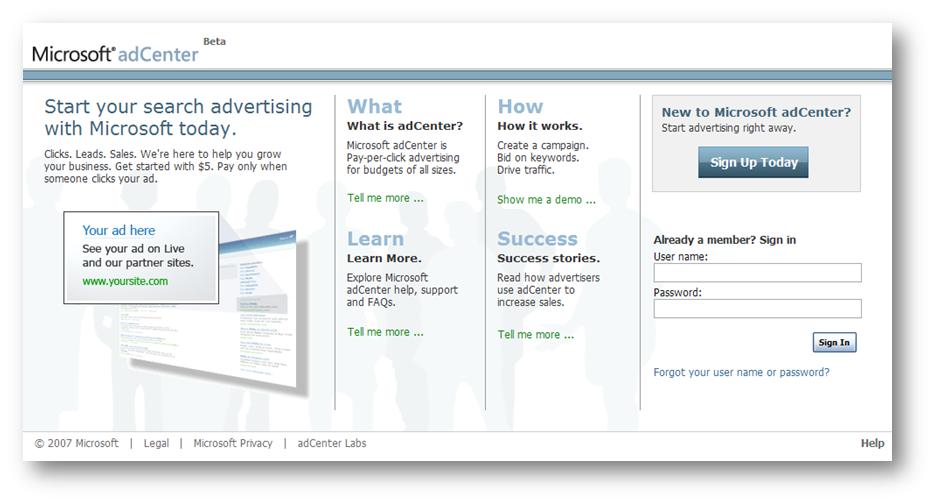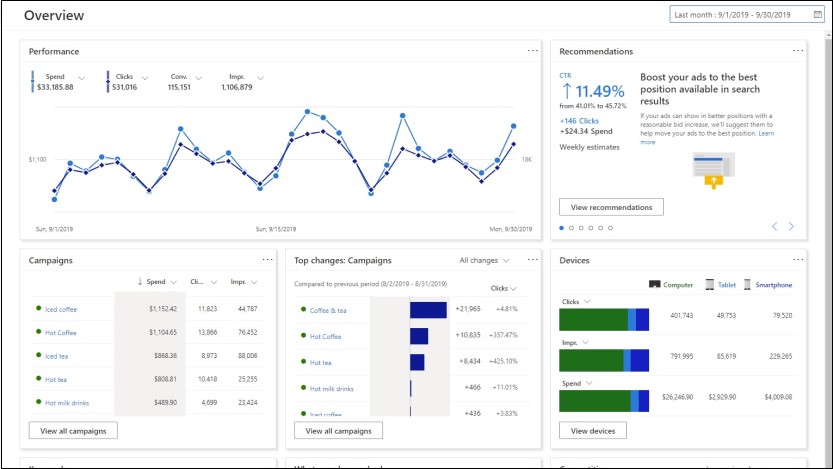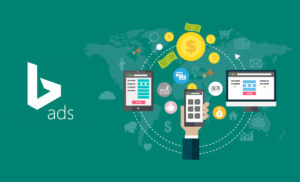When I was starting out in online business almost 15 years ago, I remember finding space in my strategy for Microsoft adCenter.
adCenter, or Microsoft Advertising as it’s now called, has been inevitably outmuscled by Google AdWords over the years. But it can still be a profitable channel for advertisers, even in 2020.
It seems we’re always looking for that silver bullet – a single platform that keeps us maximizing our revenue for years to come. But the reality is that diversifying your PPC (pay-per-click) marketing strategy can help to protect you from unpredictable bombshells like algorithm changes or cost increases.
And that’s why, in this article, I’m going to explain how adCenter could still have its place in your marketing strategy – even in 2020.


Unique benefits of Microsoft adCenter
Extra reach.
There’s no question that Google is king when it comes to the sheer size of your audience. With a 72.5% market share (as of March 2020), advertising with Google AdWords gives you the greatest potential reach for your campaigns. And many people will look at that stat as a reason to put all of their eggs in one basket.
However, adCenter still boasts 556 million unique users and almost 12 billion monthly searches on the Bing search engine. So, by leaving it out of your strategy, you’re potentially missing out on some low-hanging fruit.
This is particularly likely if your product fits an older demographic. Almost 60 per cent of Bing users are over the age of 34, and a third of Bing users have a household income of at least $100,000. That’s a lot of money being left on the table by those currently snubbing adCenter.
Lower costs.
A huge benefit of using Microsoft adCenter is that you can run ads at less than half the cost of Google AdWords. So although you might get less traffic, you’re almost certainly paying less for the conversions that you’ll get.
Bear in mind that you’re probably facing less competition on Bing. So you’ll get to enjoy the double whammy of not only paying less, but also very possibly getting a higher click-through rate than you would see on Google AdWords.
All this means that if you spend the same on adCenter as you do on AdWords, you could potentially double your profit. It doesn’t always work that way in reality, and I certainly wouldn’t suggest putting all of your spend into adCenter. But it should definitely be on your radar.
New targeting options.
Like with Google AdWords, adCenter allows you to display ads on their partner sites like AOL and Yahoo! Again, you might think of those names as real dinosaurs of the internet that nobody is using anymore. But like Bing, they are still popular with older users who you might find are surprisingly ready to buy.
What’s great about the ad distribution in adCenter is that they have options separating their partners by “owned and operated” and “syndicated search partners.” This gives you the ability to use a “target only” targeting method for your ad groups if you identify that one of the partner options is performing substantially better than the others. That’s just another creative quirk you can call upon in optimizing your campaigns to try and maximize performance as much as you can..


If you want to give adCenter a try, you can easily export your Google AdWords details to speed up the whole process.
But that should just be a starting point. Explore all of the targeting options available to you, and find your cost per click. You might be pleasantly surprised by the results.














